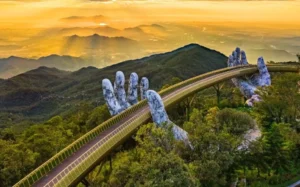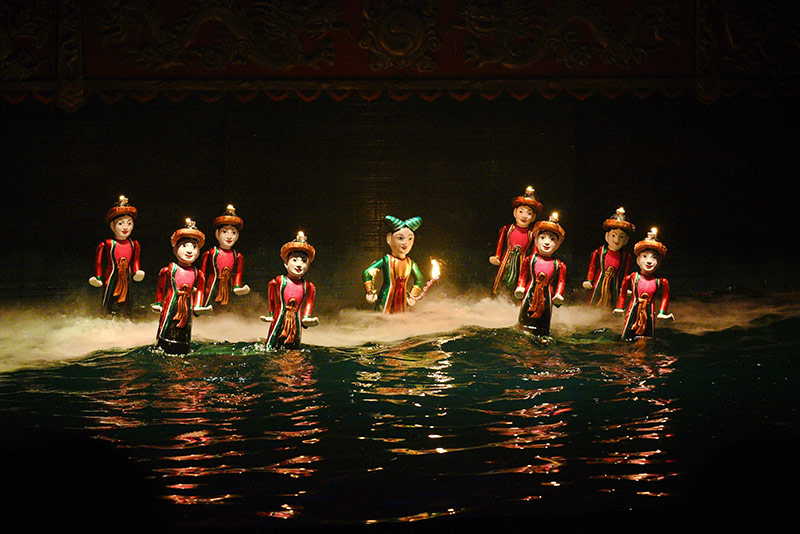Introduction to Vietnamese Water Puppetry
Water puppetry is one of Vietnam’s most distinctive traditional art forms, with origins that date back to the 11th century. Born in the rural villages of the Red River Delta, this unique type of puppet show is performed on water, making it unlike any other form of puppetry in the world. Traditionally, the performances were held in rice paddies, where the stage was set on flooded fields, allowing villagers to watch stories come to life on water.
Today, water puppetry is a cultural symbol of Vietnam and attracts tourists and locals alike. The vibrant puppets and stories depict Vietnamese folklore, village life, and the country’s historical legends, offering a glimpse into the cultural roots of the nation.
The Origins and Evolution of Water Puppetry
Vietnamese water puppetry, or “múa rối nước“, began as a form of entertainment during the rice harvest season. Villagers used the flooded rice fields as a stage, where puppeteers stood waist-deep in water, hidden behind a screen. They would control the puppets using long bamboo rods and strings, creating the illusion that the puppets were dancing on the water’s surface.
Over time, this form of art moved from the rural areas into the cities, with dedicated theaters like the Thang Long Water Puppet Theatre in Hanoi and the Golden Dragon Water Puppet Theater in Ho Chi Minh City. These venues have helped preserve and promote water puppetry, ensuring that this ancient tradition continues to thrive in modern Vietnam.
Themes and Stories in Water Puppet Shows
Vietnamese water puppet shows often depict the daily lives of villagers, agricultural scenes, and tales from Vietnamese mythology and folklore. Common themes include rice farming, fishing, and the harvest season, as well as scenes of community celebrations.
Many shows feature the legend of King Le Loi and the magical sword, a national hero’s tale, or the legendary tale of the turtle of Hoan Kiem Lake. Other popular characters include the water dragon, which represents the Vietnamese people’s resilience and strength, and Teu, a humorous and witty farmer who narrates many of the stories. These lively performances showcase Vietnam’s rich cultural heritage and offer a unique form of storytelling.
How Water Puppetry Works
Performances are usually accompanied by traditional Vietnamese music, including drums, cymbals, gongs, and bamboo flutes, adding rhythm and emotion to the show. The puppets, made from wood and lacquered to resist water damage, are brightly painted and can range from 30 to 100 centimeters in height. The combination of lighting, music, and water effects creates an enchanting experience for audiences.
Puppeteers are the unseen heroes of these shows, standing in waist-deep water behind a screen, controlling the puppets with bamboo rods hidden beneath the surface. This technique requires years of practice and teamwork to synchronize the movements of the puppets with the rhythm of the music.
Where to Watch Water Puppet Shows in Vietnam
If you want to experience the magic of water puppetry in Vietnam, there are several iconic venues where you can catch a performance:
Conclusion: Preserving Vietnam’s Unique Cultural Heritage
Water puppetry in Vietnam is not only a form of entertainment but also a window into the country’s cultural history. It connects modern audiences with the stories, legends, and daily lives of Vietnamese ancestors. The enduring popularity of water puppet shows, particularly at venues like Thang Long Water Puppet Theatre, ensures that this art form will continue to enchant audiences for generations to come.
















